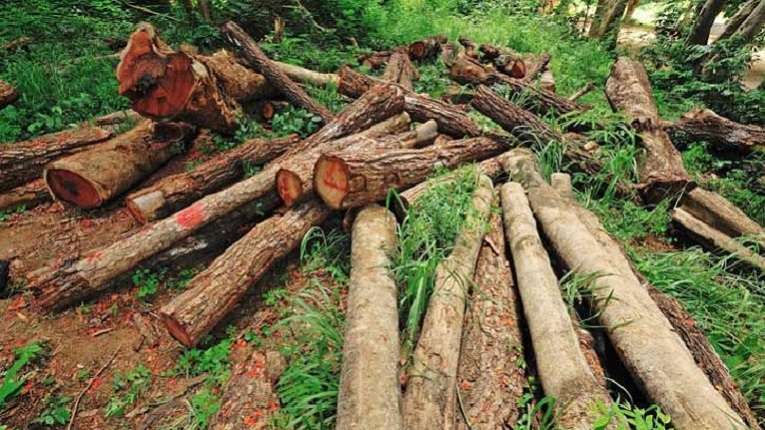Introduction: Khulna Shipyard – A Pillar of Bangladesh’s Maritime Industry-
Khulna Shipyard is one of Bangladesh’s most vital and strategic industrial establishments, located on the banks of the Rupsha River in the Khulna district. Owned and operated by the Bangladesh Navy, this shipyard plays a central role in the country’s naval and commercial shipbuilding, repair, and maintenance operations.
Established in the mid-20th century, Khulna Shipyard has evolved from a small repair facility to a major defense-grade dockyard capable of building warships, patrol crafts, and civilian vessels. It is not just a manufacturing facility—it’s a national asset shaping the country’s maritime self-reliance.
History of Khulna Shipyard-
Khulna Shipyard was originally established in 1957 during the Pakistan period under the name Khulna Dockyard and Engineering Works Ltd. Following Bangladesh’s independence in 1971, the shipyard continued its operations under government management.
In 1999, the shipyard faced major financial and administrative challenges. As a result, the Government of Bangladesh handed over its management to the Bangladesh Navy in 1999. Since then, it has undergone remarkable transformation and modernization. Under naval command, the shipyard became financially solvent and technically advanced, eventually becoming a model of industrial efficiency and defense capability.
Location and Infrastructure-
Location:
Khulna Shipyard is located in the Khulna City Corporation area along the Rupsha River, about 3 kilometers from the city center.
Geographical Coordinates:
Latitude: 22.8084° N | Longitude: 89.5676° E
Infrastructure Highlights:
- Large dry docks and slipways
- Heavy-lift cranes and gantries
- Welding and fabrication workshops
- Painting, blasting, and outfitting sections
- Marine engineering and naval architecture divisions
- Dedicated naval supervision and security systems
Ownership and Management-
Khulna Shipyard is wholly owned by the Government of Bangladesh and operated by the Bangladesh Navy. The shipyard functions as a limited company under the Ministry of Defence, with direct operational oversight by naval officers, engineers, and management professionals.
The military-grade management ensures the highest level of discipline, accountability, and quality assurance across all activities.
Production Capacity and Facilities-
Khulna Shipyard is capable of producing a wide range of marine vessels, from military patrol boats to cargo carriers. Some of its key production facilities include:
- Shipbuilding Yards: For constructing steel and aluminum-hull ships
- Dry Docks: For repairing and retrofitting vessels
- Mechanical Workshops: For engine, gearbox, and mechanical part fabrication
- Electrical Division: For marine wiring, control systems, and power generation
- Design & R&D Department: For naval architecture, 3D modeling, and custom ship design
The facility employs over 1500 skilled workers, engineers, and support staff, many of whom are trained under naval technical education programs.
Types of Ships Built-
Khulna Shipyard specializes in both military and civilian ship construction. Some notable vessels include:
- Fast Patrol Boats (FPBs)
- Inshore Patrol Vessels (IPVs)
- Landing Craft Utilities (LCUs)
- Tugboats and Oil Barges
- Fishing Trawlers and Survey Vessels
- Passenger Ferries and Cargo Ships
Several of these vessels are exported or leased to other government bodies and foreign clients, further boosting Bangladesh’s maritime export potential.
Contribution to National Defense-
One of the most critical roles of Khulna Shipyard is enhancing the Bangladesh Navy’s self-sufficiency. By producing modern patrol boats, gunboats, and support vessels locally, the shipyard reduces reliance on foreign suppliers and strengthens national defense capabilities.
It also facilitates the regular maintenance, overhauling, and upgradation of naval ships, ensuring they remain operationally ready for any mission.
Additionally, during emergencies or natural disasters, the shipyard supports humanitarian and logistic operations through rapid deployment of transport vessels.
Economic and Industrial Importance-
Khulna Shipyard is a major economic engine for southern Bangladesh. Its significance extends beyond defense:
- Employment Generation: Employs hundreds of workers and engineers.
- Skill Development: Offers technical training in shipbuilding, marine systems, and fabrication.
- Export Potential: Supports “Made in Bangladesh” branding by producing vessels for international markets.
- Support to Local Industries: Works with local suppliers for steel, electronics, paint, and marine equipment.
It also boosts the Khulna industrial zone by collaborating with other government-run and private shipyards, dry docks, and river transport companies.
Training and Research-
Khulna Shipyard provides intensive training for naval and civilian engineers in:
- Naval architecture
- Marine engineering
- Welding & fabrication
- CAD ship design
- Quality control & safety
The Naval Training School (NTS) located within the premises ensures continuous skill development for military and civilian personnel.
R&D teams are also working on innovative designs to improve efficiency, fuel consumption, and modular ship construction.
Environmental Sustainability-
Environmental concerns are taken seriously at Khulna Shipyard. Measures include:
- Proper waste management systems
- Effluent treatment plants (ETPs)
- Low-emission painting and welding techniques
- Noise and vibration control measures
Additionally, the use of eco-friendly hull coatings and ballast water management systems reflects the shipyard’s commitment to sustainable maritime practices.
Visiting Khulna Shipyard-
While Khulna Shipyard is a secure, defense-run facility with restricted access, academic groups, technical delegations, and government officials may be granted entry upon prior permission.
Educational tours are sometimes arranged for engineering students, naval cadets, and researchers interested in marine technology and industrial processes.
Visitors typically get to explore:
- Dry docks and shipbuilding platforms
- Control centers and design labs
- Display areas showing past and present vessel models
Best Time to Visit-
If you are part of an authorized tour or technical group, the best time to visit Khulna Shipyard is during the dry season (November to February). The weather is cooler and more suitable for outdoor industrial visits, and there’s less disruption due to rain or river flooding.
Planning your visit during this period also aligns with national defense expos or industry collaborations that are often held in winter months.
Conclusion-
Khulna Shipyard is more than just a manufacturing plant—it’s a testament to Bangladesh’s growing self-reliance in the maritime and defense sectors. Under the dynamic leadership of the Bangladesh Navy, the shipyard has transformed into a world-class facility capable of delivering complex vessels to meet both military and civilian demands.
Its role in national defense, economic development, industrial training, and technological advancement makes it an integral part of Bangladesh’s industrial narrative. As the nation moves towards becoming a middle-income economy, institutions like Khulna Shipyard will play an ever-greater role in shaping its future on land and sea.
Frequently Asked Questions (FAQs)-
Q: What is Khulna Shipyard?
A: Khulna Shipyard is a state-owned shipbuilding and repair facility in Bangladesh, operated by the Bangladesh Navy.
Q: When was Khulna Shipyard established?
A: It was established in 1957 and taken over by the Bangladesh Navy in 1999.
Q: What types of ships are built in Khulna Shipyard?
A: The shipyard builds patrol boats, landing crafts, cargo vessels, ferries, and fishing trawlers for both defense and civilian use.
Q: Can tourists visit Khulna Shipyard?
A: General tourists cannot visit freely. Only authorized groups like students, government delegations, or defense personnel can enter with prior approval.
Q: What is the importance of Khulna Shipyard in national defense?
A: It provides the Bangladesh Navy with domestically built vessels, reducing dependency on foreign suppliers and strengthening maritime defense.
Q: Does Khulna Shipyard contribute to exports?
A: Yes, the shipyard has produced ships for export and also supports international shipbuilding contracts.
Q: How many people work at Khulna Shipyard?
A: Over 1500 engineers, technicians, and workers are employed, many trained by the Bangladesh Navy.
Q: What makes Khulna Shipyard environmentally friendly?
A: The shipyard uses waste treatment systems, eco-friendly coatings, and follows emission control standards.














